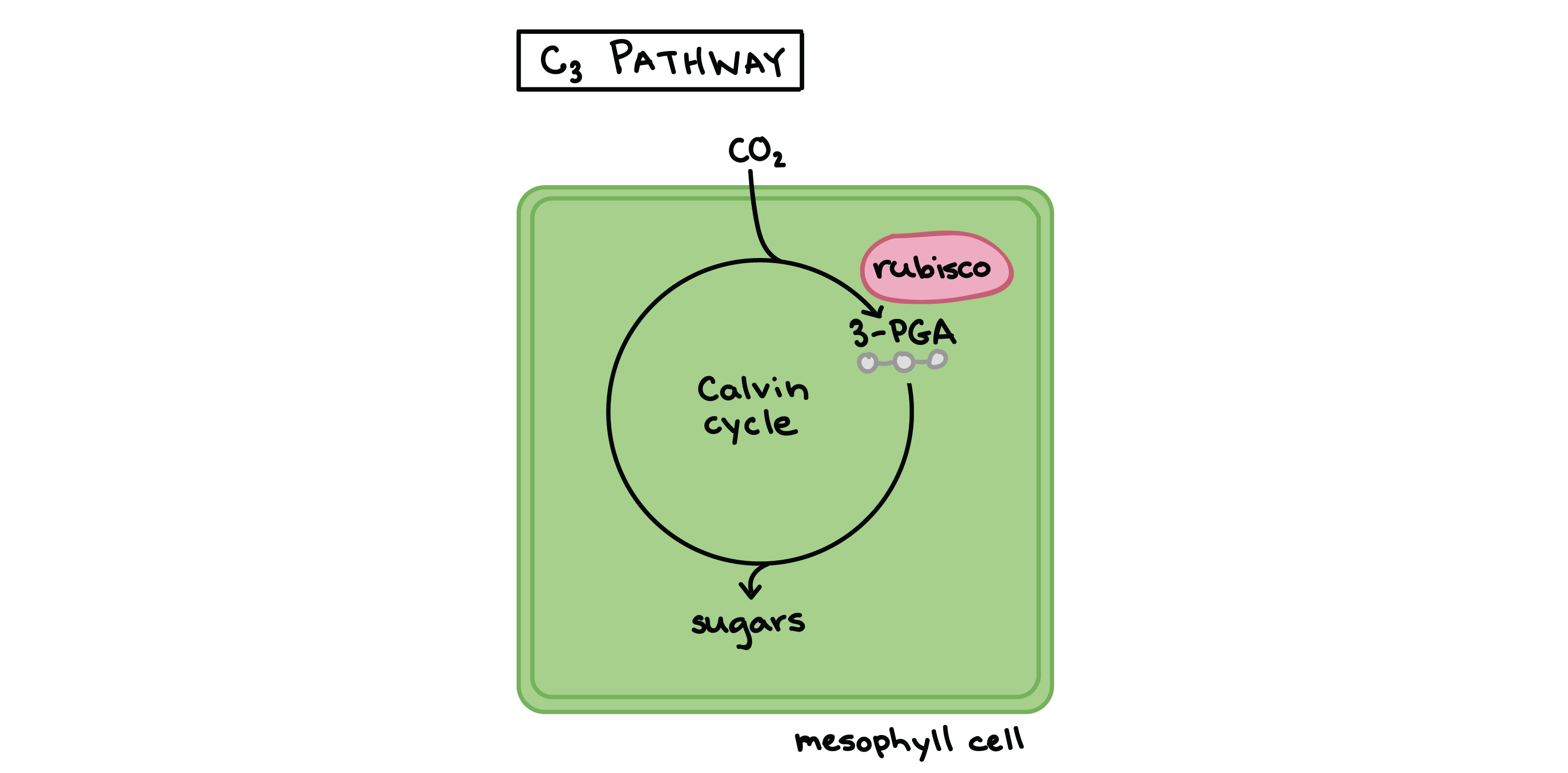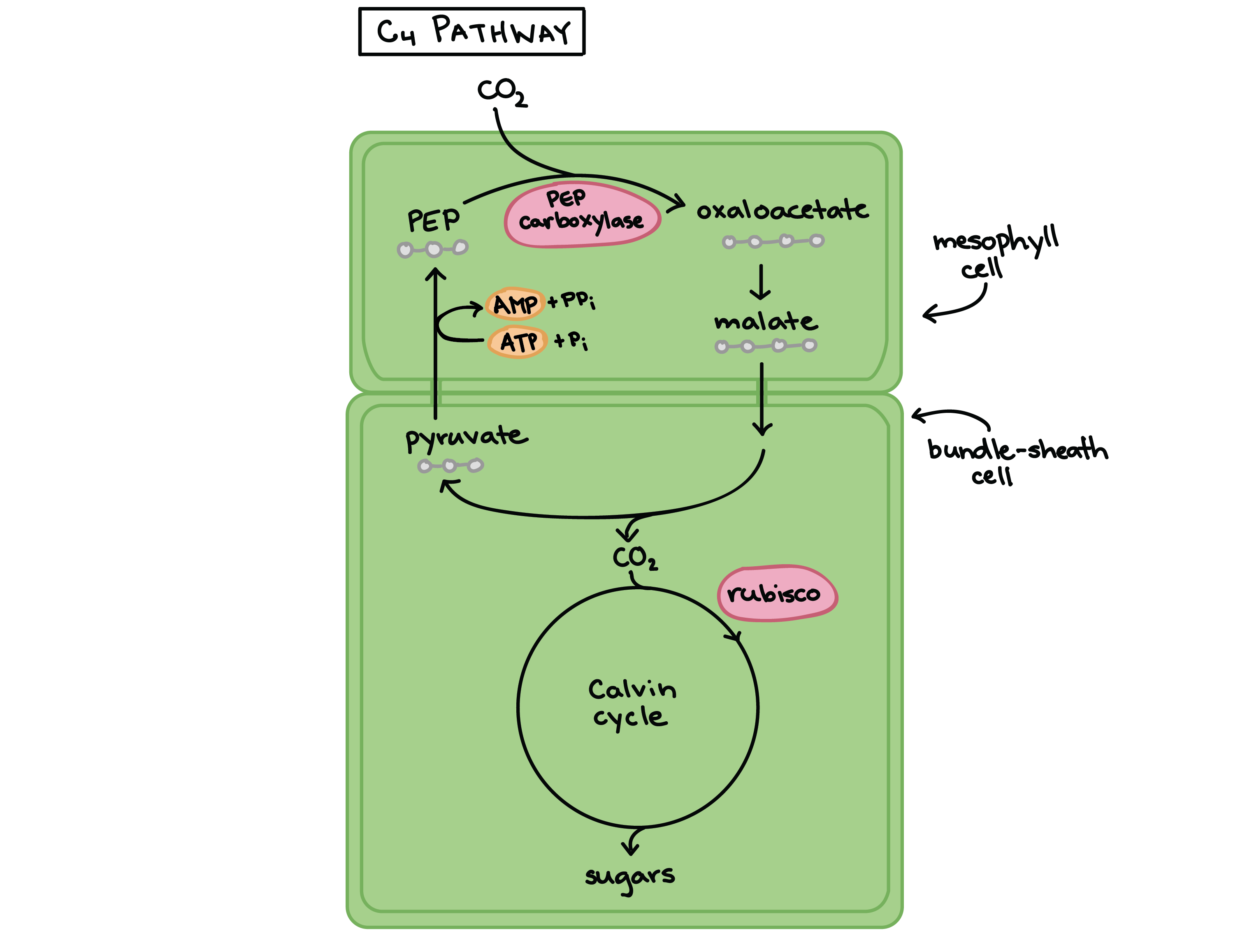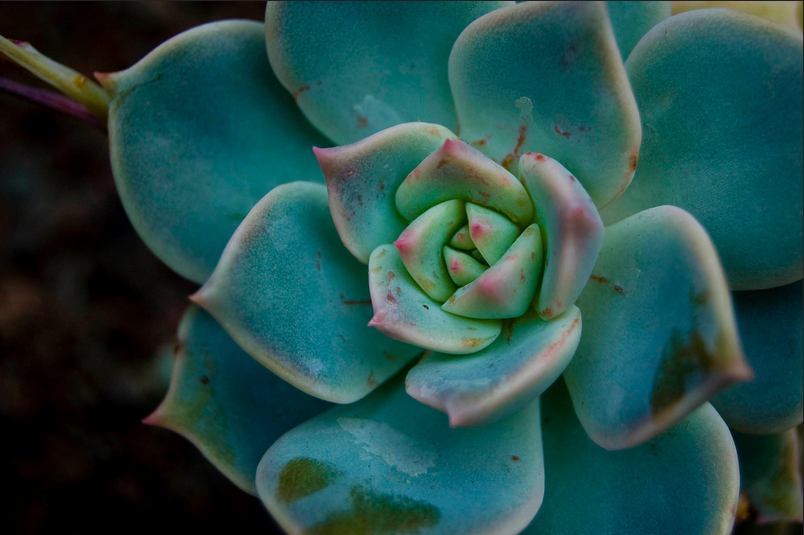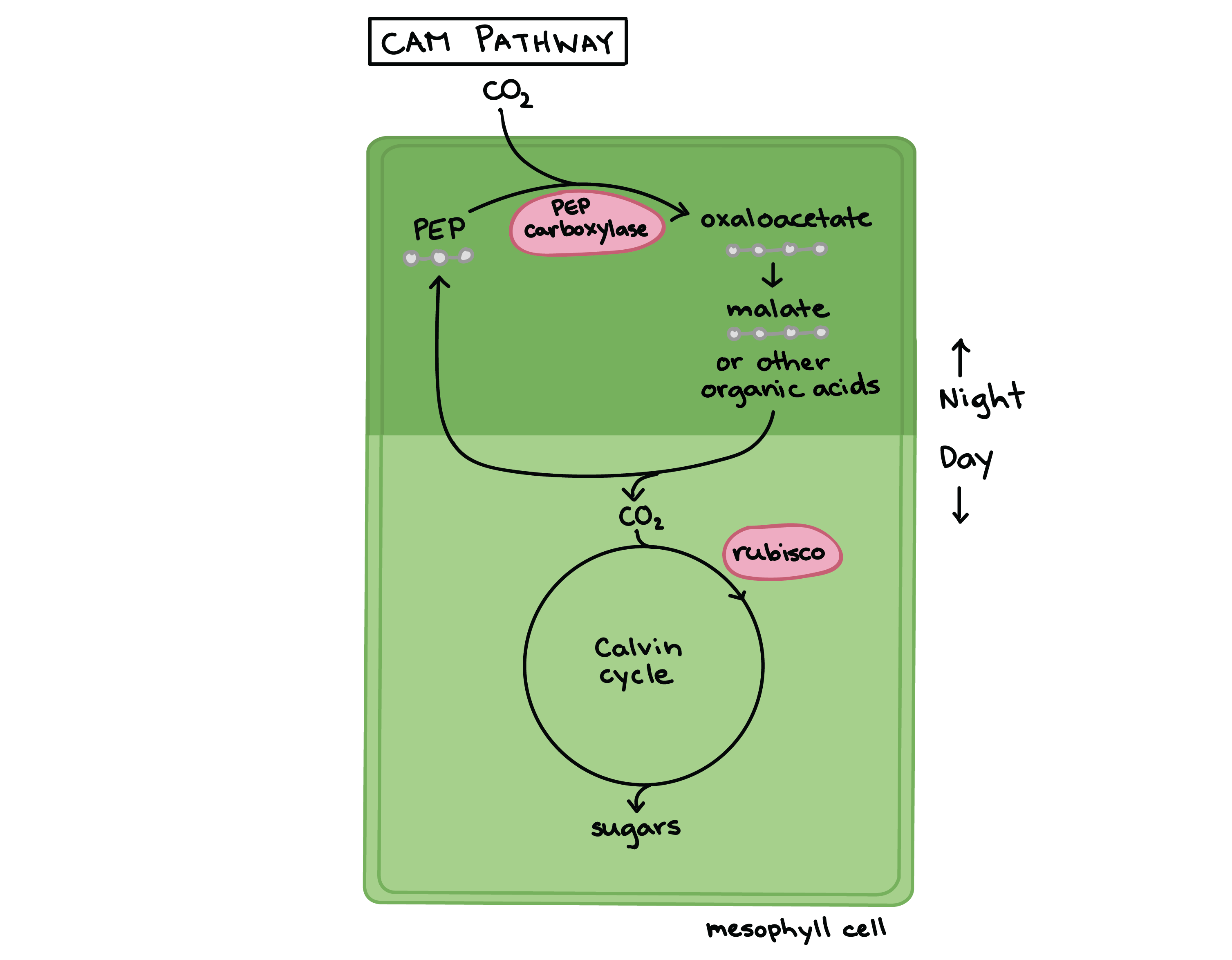Photorespiration
C4 photosynthesis
CAM plants
C3, C4, and CAM plants
Key points:
Photorespiration is a wasteful pathway that occurs when the Calvin cycle enzyme rubisco acts on oxygen rather than carbon dioxide.
The majority of plants are \[\text C_3\] plants, which have no special features to combat photorespiration.
\[\text C_4\] plants minimize photorespiration by separating initial \[\text{CO}_2\] fixation and the Calvin cycle in space, performing these steps in different cell types.
Crassulacean acid metabolism (CAM) plants minimize photorespiration and save water by separating these steps in time, between night and day.
Introduction
High crop yields are pretty important—for keeping people fed, and also for keeping economies running. If you heard there was a single factor that reduced the yield of wheat by \[20\%\] and the yield of soybeans by \[36\%\] in the United States, for instance, you might be curious to know what it was\[^1\].
As it turns out, the factor behind those (real-life) numbers is photorespiration. This wasteful metabolic pathway begins when rubisco, the carbon-fixing enzyme of the Calvin cycle, grabs \[\text O_2\] rather than \[\text{CO}_2\]. It uses up fixed carbon, wastes energy, and tends to happens when plants close their stomata (leaf pores) to reduce water loss. High temperatures make it even worse.
Some plants, unlike wheat and soybean, can escape the worst effects of photorespiration. The \[\text{C}_4\] and CAM pathways are two adaptations—beneficial features arising by natural selection—that allow certain species to minimize photorespiration. These pathways work by ensuring that Rubisco always encounters high concentrations of \[\text{CO}_2\], making it unlikely to bind to \[\text O_2\].
In the rest of this article, we'll take a closer look at the \[\text C_4\] and CAM pathways and see how they reduce photorespiration.
\[\text C_3\] plants
A "normal" plant—one that doesn't have photosynthetic adaptations to reduce photorespiration—is called a \[\text{C}_3\] plant. The first step of the Calvin cycle is the fixation of carbon dioxide by rubisco, and plants that use only this "standard" mechanism of carbon fixation are called \[\text C_3\] plants, for the three-carbon compound (3-PGA) the reaction produces\[^2\]. About \[85\%\] of the plant species on the planet are \[\text C_3\] plants, including rice, wheat, soybeans and all trees.

\[\text C_4\] plants
In \[\text C_4\] plants, the light-dependent reactions and the Calvin cycle are physically separated, with the light-dependent reactions occurring in the mesophyll cells (spongy tissue in the middle of the leaf) and the Calvin cycle occurring in special cells around the leaf veins. These cells are called bundle-sheath cells.
To see how this division helps, let's look at an example of \[\text C_4\] photosynthesis in action. First, atmospheric \[\text{CO}_2\] is fixed in the mesophyll cells to form a simple, \[4\]-carbon organic acid (oxaloacetate). This step is carried out by a non-rubisco enzyme, PEP carboxylase, that has no tendency to bind \[\text O_2\]. Oxaloacetate is then converted to a similar molecule, malate, that can be transported in to the bundle-sheath cells. Inside the bundle sheath, malate breaks down, releasing a molecule of \[\text{CO}_2\]. The \[\text{CO}_2\] is then fixed by rubisco and made into sugars via the Calvin cycle, exactly as in \[\text C_3\] photosynthesis.

This process isn't without its energetic price: ATP must be expended to return the three-carbon “ferry” molecule from the bundle sheath cell and get it ready to pick up another molecule of atmospheric \[\text{CO}_2\]. However, because the mesophyll cells constantly pump \[\text{CO}_2\] into neighboring bundle-sheath cells in the form of malate, there’s always a high concentration of \[\text{CO}_2\] relative to \[\text O_2\] right around rubisco. This strategy minimizes photorespiration.
The \[\text C_4\] pathway is used in about \[3\%\] of all vascular plants; some examples are crabgrass, sugarcane and corn. \[\text C_4\] plants are common in habitats that are hot, but are less abundant in areas that are cooler. In hot conditions, the benefits of reduced photorespiration likely exceed the ATP cost of moving \[\text{CO}_2\] from the mesophyll cell to the bundle-sheath cell.
CAM plants
Some plants that are adapted to dry environments, such as cacti and pineapples, use the crassulacean acid metabolism (CAM) pathway to minimize photorespiration. This name comes from the family of plants, the Crassulaceae, in which scientists first discovered the pathway.

Image credit: "Crassulaceae," by Guyon Morée (CC BY 2.0).
Instead of separating the light-dependent reactions and the use of \[\text{CO}_2\] in the Calvin cycle in space, CAM plants separate these processes in time. At night, CAM plants open their stomata, allowing \[\text{CO}_2\] to diffuse into the leaves. This \[\text{CO}_2\] is fixed into oxaloacetate by PEP carboxylase (the same step used by \[\text C_4\] plants), then converted to malate or another type of organic acid\[^3\].
The organic acid is stored inside vacuoles until the next day. In the daylight, the CAM plants do not open their stomata, but they can still photosynthesize. That's because the organic acids are transported out of the vacuole and broken down to release \[\text{CO}_2\], which enters the Calvin cycle. This controlled release maintains a high concentration of \[\text{CO}_2\] around rubisco\[^4\].

The CAM pathway requires ATP at multiple steps (not shown above), so like \[\text{C}_4\] photosynthesis, it is not an energetic "freebie." \[^3\] However, plant species that use CAM photosynthesis not only avoid photorespiration, but are also very water-efficient. Their stomata only open at night, when humidity tends to be higher and temperatures are cooler, both factors that reduce water loss from leaves. CAM plants are typically dominant in very hot, dry areas, like deserts.
Comparisons of \[\text C_3\], \[\text C_4\], and CAM plants
\[\text C_3\], \[\text C_4\] and CAM plants all use the Calvin cycle to make sugars from \[\text{CO}_2\]. These pathways for fixing \[\text{CO}_2\] have different advantages and disadvantages and make plants suited for different habitats. The \[\text C_3\] mechanism works well in cool environments, while \[\text C_4\] and CAM plants are adapted to hot, dry areas.
Both the \[\text{C}_4\] and CAM pathways have evolved independently over two dozen times, which suggests they may give plant species in hot climates a significant evolutionary advantage\[^5\].
| Type | Separation of initial \[\text{CO}_2\] fixation and Calvin cycle | Stomata open | Best adapted to |
|---|---|---|---|
| \[\text C_3\] | No separation | Day | Cool, wet environments |
| \[\text C_4\] | Between mesophyll and bundle-sheath cells (in space) | Day | Hot, sunny environments |
| CAM | Between night and day (in time) | Night | Very hot, dry environments |
